Mold is a serious problem in homes and commercial buildings. It can ruin woods, wreak havoc on structures, and can also cause many health and safety problems for people who work or live in buildings where mold has been detected.
Wood is porous, meaning that it can hold liquids and gasses while being absorbent as well. It is natural for a lot of substances to become ingrained in the structure of wood. This becomes an issue when mold forms on the surface of wooden furniture.
It is not easy to kill mold from surfaces but most mold removers are excellent at removing it from wood. Let’s take a look at ways to prevent mold growth and different ways to remove mold from wood surfaces.
What is Mold & Where Does It Grow?
Wood is porous and therefore very susceptible to mold growth.
When you think of mold, you probably think of it growing on a wall in a basement or your bathroom. But it’s not just those locations that are prone to grow mold.
Mold can grow just about anywhere that is moist enough. It does damage over time after creeping into rooms through cracks and crevices.
Mold is a type of fungal growth that can grow on almost anything.

It is very common in damp, humid environments such as pipes, windows, and around leaks in roofs and needs moisture to survive and grow. If your home is humid enough, then chances are high that you will find a lot of mold around you.
Mold grows by reproducing and releasing spores into the air. These spores start growing again when they come into contact with a suitable spot where they germinate into new colonies of mold. The spot conducive for their growth must be damp, warm, and dark.
What are the Different Types of Mold?
Several types of mold grow in various environments and have different colors. Some molds are dangerous to humans while others are not harmful at all.
So, let’s take a look at some of the most common types so you can figure out what kind you have on your hands.
1. Aspergillus
This is a type of filamentous fungi found in soil, food, and on decaying vegetation. Unlike other types of mold, aspergillus can thrive in hot and dry conditions.
2. Cladosporium
Cladosporium is a type of fungus and like other molds, they form colonies and release spores. The most common place they live is in poorly ventilated attics or basements where they can linger unnoticed for a long time.
3. Alternaria
Alternaria is a mold that you’re likely to come across. It’s commonly found in fruits, vegetables, air conditioning systems, carpets, window frames, and wallpapers.
It’s harmful and spreads widely in a short period, making people uncomfortable. Get help from experts immediately after you find it.
4. Chaetomium
Chaetomium colonies are a common sight in damp and humid locations. Often, they grow on materials like wood that have cellulose.
Since most people associate these types of fungi with water damage, it’s essential to be aware of their presence so you can clear them out before they cause any major damage.
What are the Potential Health Hazards of Mold?
Mold is life-threatening to your health and well-being and needs to be taken seriously, especially if you have young children living in the house.
It can produce allergens that trigger asthma attacks, allergic reactions, or other health problems.
Some types of mold, however, are more harmful than others. One type of mold, Stachybotrys Chartarum is also called toxic Black mold because it produces a mycotoxin that can cause serious health problems such as animal and human mycotoxicosis.
Symptoms of mold infection include throat irritation, coughing, skin irritation, nasal stiffness, asthma, and lung infection.
Additionally, mold can cause structural damage to your home.
tools & materials are required for removing mold
When you’re removing wood mold, you’ll want to make sure you have all the right tools. If you don’t, it can be difficult to remove the mold completely and completely clean the surface afterward.
Some tools necessary for mold removal include:
- 100-grit sandpaper
- N100 air mask or particulate disposable respirator
- A soft piece of cloth
- Non-vented goggles to protect the eyes
- Sponge
- Soft brush
- Toothbrush
- Cleaning gloves
- Vacuum cleaner
- Disposable coveralls
- Protective footwear
- Spray bottle
10 Different Ways to Remove Mold From Wood Or any Other Surface
Have you ever experienced mold or mildew growth on surfaces or structures? If so, then you understand just how frustrating this kind of situation can be.
Mold needs to be removed quickly before it starts spreading to other areas of the house.
There are several ways to remove mold from your home and the good news is that most of these methods can be done with as little hassle as possible.
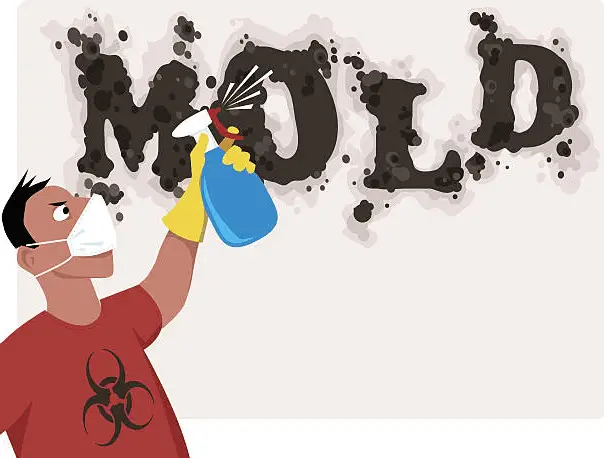
Some of the methods of mold removal are:
1. Vacuuming
A good vacuum cleaner is essential for removing loose mold spores on affected wooden surfaces. Vacuuming the affected surface is probably the most common and straightforward way to get rid of mold.
The goal is to remove spores from the wood, trapping any dirt and particles on top of them. The vacuum should be HEPA filter-equipped for best results.
HEPA is an acronym for High-Efficiency Particulate Arrestance which means the filter can catch about 99% of harmful particles, including mold spores & prevent the mold spores from being released into the air.
It’s best to empty it outside into a sealed, disposable plastic bag. Ensure you seal it tightly so no mold spores can get out.
It is also important to keep in mind that vacuuming alone will not completely remove all of the mold, and other methods, such as scrubbing with a mold-killing solution, will likely be necessary to completely eliminate the mold.
2. Distilled White Vinegar Solution (For All Surfaces)
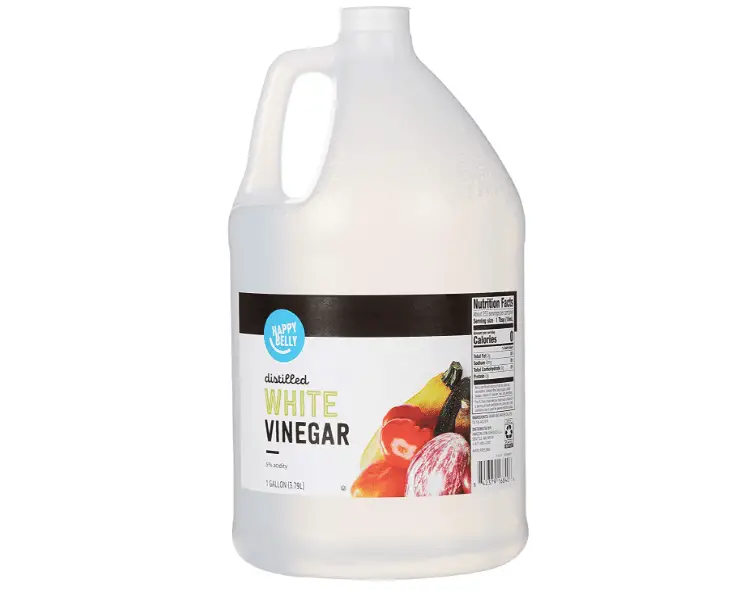
This is one of the best ways to get rid of mold in your home. The vinegar is effective against mold and mold spores that grow on concrete, inside the walls, under ceilings, and in other places.
White vinegar contains acetic acid which is mildly strong. The basic reactivity of vinegar against mold comes from this property as it disrupts the growth of mold spores on wood, making it perfect for the removal of mold and mold spores from various surfaces.
However, the solution is not effective in removing or killing all types of mold.
3. Exposure to Sunlight
Exposure to sunlight is an efficient method to kill mold and mildew. The UV rays (UV-C) in sunlight take between 1 to 3 hours to kill any spores or mold that is present on surfaces and stop them from reproducing.
Sunlight also dries out any moisture that may be contributing to the growth of fungus. It is important for homeowners not only to clean up any mold or mildew but also to make sure there isn’t a water leak or other moisture source that could contribute to its growth.
4. Detergent Solution
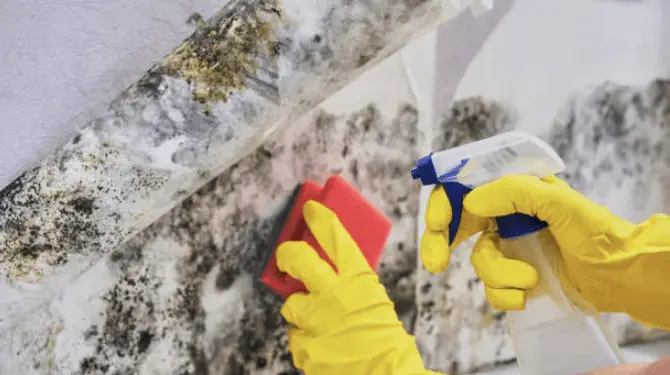
It is a great cleaning agent that can help eliminate the presence of mold on wood. The dishwashing detergent should help remove any mold and mildew. Scrubbing hard would get rid of stains and detergent will help the process go more smoothly.
Detergent is not enough to kill mold off a surface as it only scrubs off mold that is visible from the wooden surface. It is best used in conjunction with bleaches to help kill the mold.
5. Use Bleach Solution To Kill Mold
Bleach is an inexpensive and effective solution for removing mold. It works by oxidizing molecules in the cell walls of molds, which kills them. It also prevents new growth from forming on the surface where it is applied.
Bleach solution can be used in many areas around the home, including kitchens and bathrooms, as well as other areas such as closets or laundry rooms.
While bleach is great at killing mold, it should be noted that it can be irritating and toxic if inhaled in large quantities. Make sure to wear proper protective gear before use.
6. Tea Tree Oil
This oil is a natural substance that is extracted from the leaves of an Australian tree.
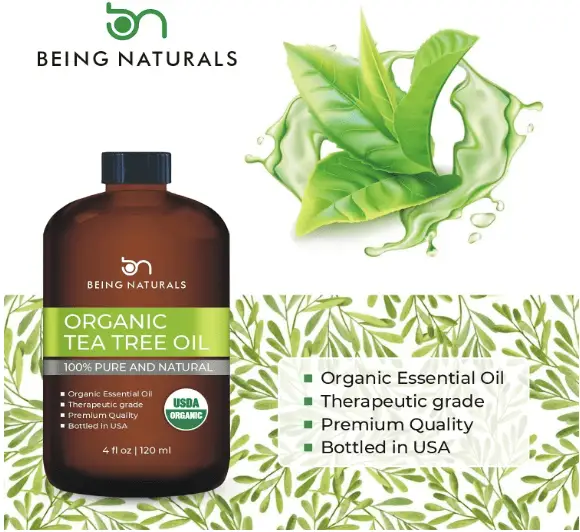
There are many benefits to using tea tree oil for this purpose. It is a natural product, it is safe, and it is effective. The oil also has a low level of toxicity, so it can be safely used around humans and animals.
One disadvantage of tea tree oil is that it is quite expensive.
7. Mold Removal Using Borax Powder
Borax powder is a white substance composed of boron, oxygen, and sodium. These three ingredients can kill mold and mildew as well as other types of bacteria by increasing the PH to prevent growth.
Steps To Remove Mold Using Borax Powder:
- For seriously affected surfaces, mix a gallon of hot water with a cup of borax powder and put the solution in a spray bottle.
- After spraying the affected area, scrub it with a toothbrush.
- Wipe away the mold but don’t rinse.
- Leave some borax on the surface to prevent the mold from coming back.
However, note that borax is widely considered to be unsafe and not eco-friendly.
8. Vodka
Many people overlook the simplest and most effective method: spirits.
While vodka may not seem like the obvious choice to get rid of mold on surfaces, it actually works! It is a natural disinfectant, fungicide, and deodorizer. The alcohol content is effective at removing mold and disinfecting the area with its acidity.
All you need to do is mix a cup of vodka, a cup of distilled water, 10 drops of lavender oil, and 10 drops of lemon essential oil. Then spray.
9. Hydrogen Peroxide Solution
The hydrogen peroxide solution is a chemical that many people use to clean mold because it kills microorganisms. It has strong antimicrobial properties and is used in cleaning products to disinfect wood.
Steps to remove the mold using Hydrogen Peroxide Solution:
- At your local pharmacy, buy a bottle of hydrogen peroxide with a concentration of 3%.
- Afterward, transfer the content into a spray bottle and spray on the affected area.
- Leave the chemical on the mold-infected surface for some time to take effect.
- Then, you’ll want to scrub the area thoroughly to remove any mold or stains remaining.
10 Sanding
This process removes the top layer of the surface, where mold and mildew typically start to grow. This way, you can get rid of them before they get a chance to expand.
There are things you need to keep in mind when you sand though. Sanding should be done with care so that you don’t ruin the rest of your wood or even ruin parts that have already suffered from mold growth.
Rub out the affected area using 100-grit sandpaper and make sure you don’t buff off too much material. After that, use your vacuum to remove any remaining debris.
When Do You Need To Hire an Expert?
If you’re unable to remove mold yourself, we recommend hiring an expert when you notice signs of mold growth such as discoloration on the surface of walls, ceilings, carpets, furniture, musty odors, or stains on floors.
Mold removal is a complex process that requires the right equipment and skills, so you need to find someone who can do it properly.
Precautions To Take While Removing Mold From The Surface
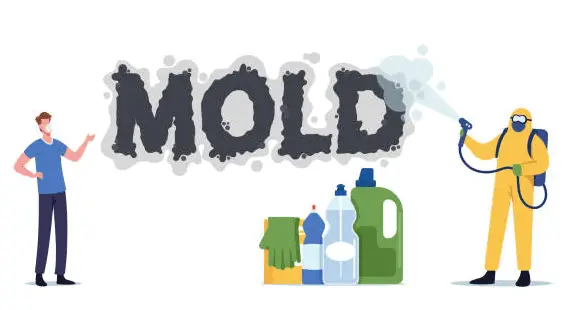
Removing mold on your own can often be quite dangerous. Not only does it require the right tools, but if you don’t take the proper precautions for removal then you could be putting yourself in danger considering how harmful it is.
Mold removal should be done carefully to prevent spreading spores into the air. The following tips will help you complete this task without any undesired harmful effects.
1. Open Windows & Doors
Mold spores thrive in poorly ventilated environments, so make sure to open up all of the windows and doors in your home as soon as you discover them. This will create a better airflow so moisture will dry out of the house faster. However, you don’t need fans—which may just be blowing mold spores all around.
2. Wear Proper Personal Protective Equipment (PPE)
It is important to wear gloves when handling any surface that has been exposed to water or moisture for extended periods. Gloves protect your hands from potentially harmful substances.
You should also wear a mask while removing mold, so you don’t breathe any spores into your lungs. It is of utmost importance to wear goggles to protect your eyes from chemical fumes, sprays, or splashes.
3. Don’t Mix Chemicals
Mixing chemicals isn’t a good idea because they will react and create toxic fumes that could be harmful to you and your family. When you mix chemicals, the chemicals react with each other to form new substances. Some of these substances are very dangerous and can cause toxic fumes.
4. Do it Outdoors or in a Well-Ventilated Room
If you’re removing mold from wooden furniture, we recommend taking it outdoors. Provided it is something you can take outside and scrape off or clean, go for it. Otherwise, try to find a way to get rid of the infestation safely indoors.
Presuming that the surface that has mold on it is something that can’t be removed from the room, ensure there is adequate ventilation in the room before trying to kill the mold.
5. Don’t Try to Cover Mold
When you’re trying to get rid of mold, it can be tempting to try covering it up with paint or another sealant. But this is not a good idea. In the end, this would cost much more than it would have been to remove all the mold in the first place.
6. Get an Expert if the Process is Overwhelming
Mold removal can be a complex task that requires specialized tools like large desiccant dehumidifiers and expertise. If you don’t have access to this, it’s best to get help.
The best way to tackle mold issues is by having someone who knows what they are doing come in and take care of everything for you.
Find a professional who can help you through this process. It is better to spend money on a professional than to make the situation worse by trying to do it yourself.
How To Prevent Mold from Growing on Wooden Surfaces?
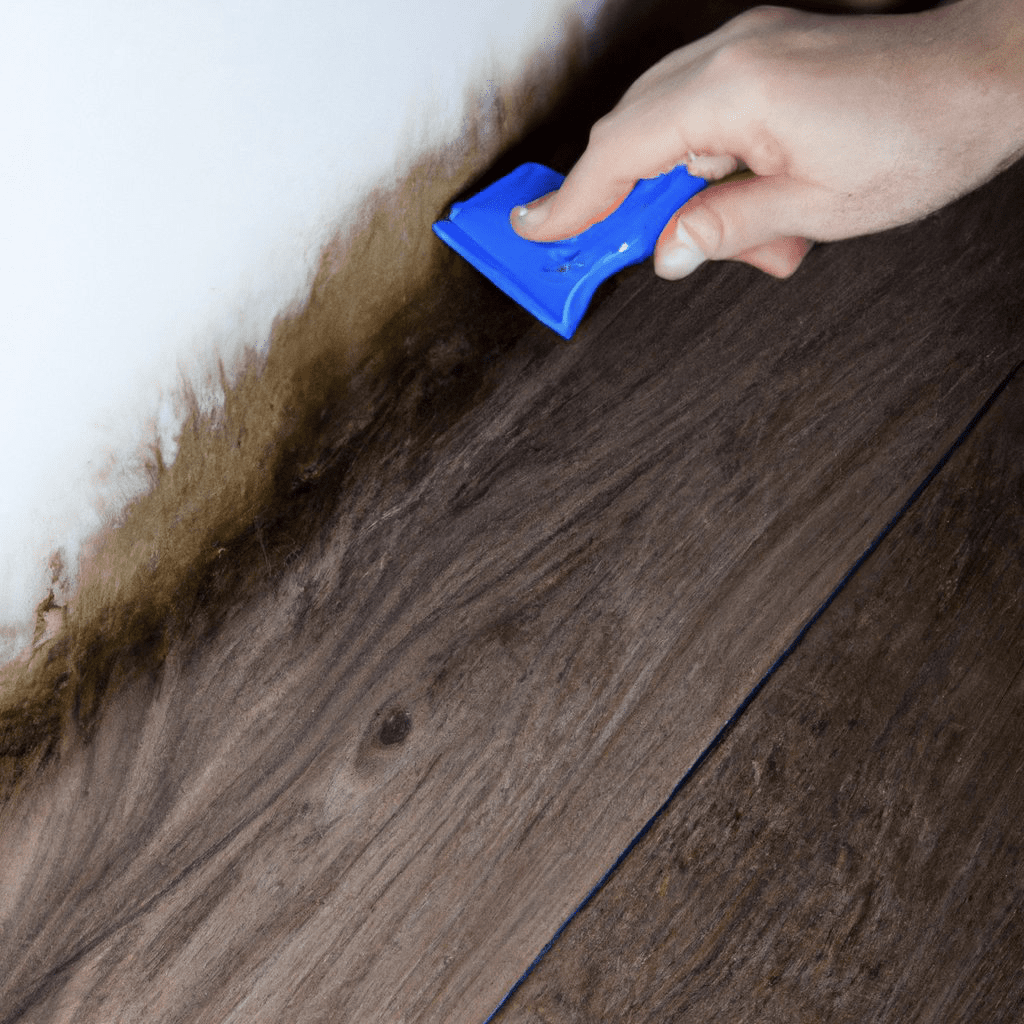
Mold spores can be found pretty much everywhere — on floors, carpets, the air, and even walls. And there are ways you can prevent them from getting onto your wooden surfaces. These include:
1. Using Dehumidifiers
The humidity level in your home determines if the environment would be conducive to mold. If there is too much moisture in the air, mold will start to grow on wood surfaces.
Humidity can be controlled by using a humidifier or an air conditioner. Both can help keep humidity levels low enough.
Mold will frequently develop when the humidity indoors is more than 70%. Constantly keep your home’s humidity levels at an optimal, comfortable 50% or less.
2. Fix All Leaks
The roof of your home is the first line of defense against rainwater, snow, and other elements that can cause water damage to your home. If you notice any leaks in your roof, it’s important to fix them as soon as possible.
Take immediate action to prevent mold from growing by fixing any leaks in your home’s roof, walls, or plumbing, and make sure that there are no sources of moisture in the house.
3. Proper Insulation
When there is condensation around your wooden surfaces, they will be more prone to mold growing on them. Take steps to minimize mold growth by protecting your wooden surfaces from condensation through insulation.
The best way to do that is by using high-quality and durable insulation materials like cellulose or spray polyurethane foam.
4. Add Mold Inhibitors To Paints
Mold inhibitors are antimicrobial agents that prevent the growth of mold by stopping their ability to contaminate a surface or reproduce.
You can as well use mold and mildew-resistant paints. These paints are specially formulated with antimicrobial chemicals to protect wooden surfaces from mold. They also have a protective film that resists water absorption.
5. Check Your Wood Using a Moisture Meter
Wood is a natural material that is prone to mold growth if it gets too wet. This can happen when the wood is exposed to high humidity and moisture levels over a long time.
The best way to prevent rot and mold infestation is by periodically checking the moisture level of your wood using a moisture meter. It is useful in determining if mold is likely to develop on a wooden surface.
6. Clean Surfaces With Mold-Killing Solutions
An effective way to prevent mold is to clean wooden surfaces with mold-killing products that have antimicrobial properties, such as bleach or vinegar. These products will kill the mold spores that may be present before they have a chance to grow into colonies.
After using the products, wipe the surface down with a cloth, then let it dry before putting anything back on it.
7. Ventilation
An excellent way to prevent mold from growing on wood is to provide proper ventilation.
Ventilation is one of the most overlooked measures in maintaining pieces of furniture. It prevents moisture from accumulating on the surface of the wood and acts as a means to combat any condensation from forming on surfaces.
Conclusion
Mold is a common problem for wood and other organic objects, but it’s not an unsolvable one. With the right cleaning supplies on hand and a little bit of knowledge of how to use them, it can be removed.
The procedures are quite easy, so there’s little reason why you shouldn’t do it if you spot mold on your wood surfaces. Using these methods, you can easily remove mold from wood without much trouble at all. If the mold proves stubborn, you can always resort to getting assistance from professionals.
We recommend taking the time to consider your needs before choosing the best method for you.
